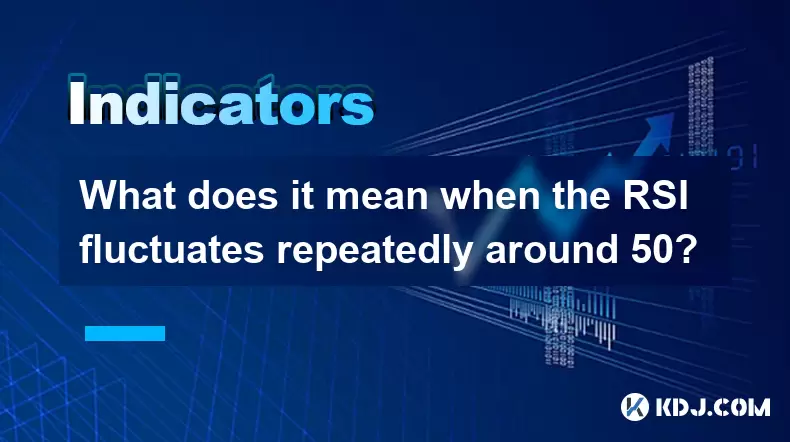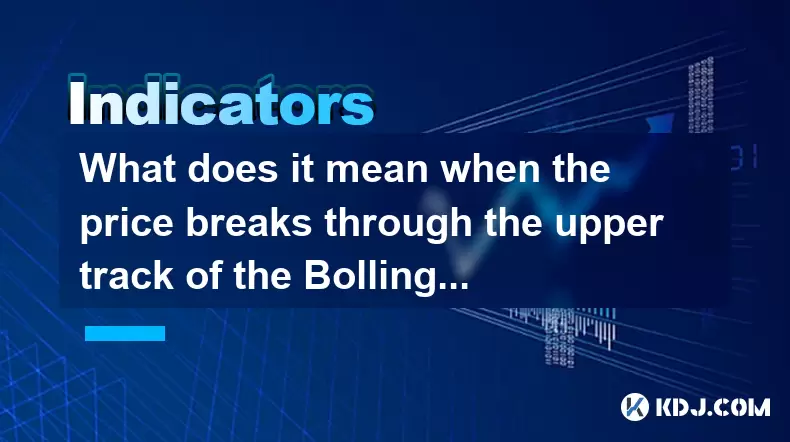-
 Bitcoin
Bitcoin $117500
-0.66% -
 Ethereum
Ethereum $3760
-1.24% -
 XRP
XRP $3.087
-2.54% -
 Tether USDt
Tether USDt $0.9999
-0.01% -
 BNB
BNB $803.6
-4.03% -
 Solana
Solana $180.3
-4.15% -
 USDC
USDC $0.9998
-0.01% -
 Dogecoin
Dogecoin $0.2218
-4.92% -
 TRON
TRON $0.3366
3.71% -
 Cardano
Cardano $0.7785
-3.73% -
 Hyperliquid
Hyperliquid $42.90
-4.75% -
 Sui
Sui $3.797
-7.45% -
 Stellar
Stellar $0.4165
-2.32% -
 Chainlink
Chainlink $17.65
-4.17% -
 Bitcoin Cash
Bitcoin Cash $561.0
-3.86% -
 Hedera
Hedera $0.2611
-4.54% -
 Avalanche
Avalanche $24.33
-7.02% -
 UNUS SED LEO
UNUS SED LEO $8.972
0.06% -
 Litecoin
Litecoin $107.6
-2.79% -
 Toncoin
Toncoin $3.254
-1.84% -
 Shiba Inu
Shiba Inu $0.00001306
-4.69% -
 Ethena USDe
Ethena USDe $1.001
0.00% -
 Uniswap
Uniswap $10.10
-4.83% -
 Polkadot
Polkadot $3.902
-4.63% -
 Monero
Monero $315.1
-2.57% -
 Dai
Dai $1.000
0.02% -
 Bitget Token
Bitget Token $4.499
-2.53% -
 Pepe
Pepe $0.00001145
-7.38% -
 Cronos
Cronos $0.1479
6.07% -
 Aave
Aave $281.3
-4.07%
What does it mean when the RSI fluctuates repeatedly around 50?
When RSI hovers around 50 in crypto trading, it signals market indecision, indicating a balance between buyers and sellers rather than overbought or oversold conditions.
Jun 19, 2025 at 07:07 am

Understanding the RSI Indicator in Cryptocurrency Trading
The Relative Strength Index (RSI) is a momentum oscillator commonly used in cryptocurrency trading to measure the speed and change of price movements. Typically ranging from 0 to 100, the RSI helps traders identify overbought or oversold conditions. When the RSI fluctuates repeatedly around 50, it suggests a specific market behavior that traders must interpret carefully.
In the context of crypto markets, which are known for high volatility and rapid price swings, understanding such patterns becomes crucial. The RSI hovering near 50 indicates neither strong bullish nor bearish dominance, but rather a balance or indecision in the market.
Market Indecision and Neutral Momentum
When the RSI oscillates around the 50 level, it often signals market indecision. This means that neither buyers nor sellers are able to gain consistent control over the price direction. In highly speculative assets like cryptocurrencies, this can occur during consolidation phases or before major news events that could shift sentiment.
This neutral momentum doesn't necessarily imply weakness; instead, it reflects a temporary equilibrium between supply and demand forces. For instance, if Bitcoin’s price is moving sideways after a sharp rally or drop, its RSI may hover around 50, indicating that traders are waiting for new information or catalysts to take positions.
Identifying Potential Reversals or Continuations
Repeated fluctuations around the 50 mark can also hint at potential trend reversals or continuations, depending on how the RSI behaves alongside price action. If the RSI stays close to 50 for an extended period and then breaks decisively above or below, it may signal the start of a new trend.
For example:
- A break above 50 accompanied by rising volume might suggest strengthening buyer interest.
- A break below 50 could indicate growing selling pressure.
Traders should pay attention to candlestick patterns and volume indicators when the RSI starts to move away from the 50 zone, as these can confirm whether the breakout has enough strength to sustain a new trend.
How to Use RSI Around 50 in Crypto Trading Strategies
Using the RSI fluctuating around 50 effectively requires combining it with other tools and strategies. Here's a detailed approach:
- Combine with support/resistance levels: If the RSI hovers around 50 while price approaches a key support or resistance level, it may indicate a potential bounce or breakout.
- Watch for divergences: Even if the RSI remains around 50, a divergence between RSI and price can be a powerful signal. For example, if the price makes a new high but the RSI fails to exceed its previous peak, it may signal weakening momentum.
- Use time frame analysis: Check the RSI across multiple time frames. If it's consolidating around 50 on the 1-hour chart but trending clearly on the 4-hour or daily chart, you can better judge the broader context.
Avoid making decisions based solely on RSI readings near 50. Always cross-check with other technical indicators like moving averages or MACD to filter out false signals.
Common Misinterpretations and How to Avoid Them
One common mistake among novice traders is interpreting any movement around the 50 level as a buy or sell signal. However, RSI near 50 does not inherently indicate overbought or oversold conditions. Those typically occur at or above 70 and at or below 30, respectively.
Another misstep is expecting immediate directional moves once RSI crosses 50. In reality, the RSI can remain in this neutral zone for long periods, especially in low-volatility environments or during sideways trends.
To avoid confusion:
- Do not assume a breakout will happen just because RSI is near 50
- Wait for confirmation from other indicators or candlestick formations
- Monitor volume spikes, which often precede real breakouts
By avoiding these pitfalls, traders can more accurately assess whether the RSI hovering around 50 is a precursor to a new trend or simply part of a larger consolidation phase.
Practical Example: RSI Behavior During Crypto Consolidation
Let’s consider a real-world scenario involving Ethereum during a consolidation phase. Suppose ETH/USD is trading within a tight range of $2,800 to $3,000 for several days. On the RSI chart, the indicator repeatedly touches 50 and bounces slightly above or below without forming a clear trend.
During this time:
- Traders notice no significant volume surges
- Price shows minimal breakout attempts
- RSI stays confined within a narrow band around 50
Eventually, a positive fundamental development—like an ETF approval or network upgrade—triggers a surge in buying activity. The RSI jumps from 50 to above 70 in a matter of hours, signaling a strong bullish move.
This example illustrates how the RSI near 50 can represent a coiled spring ready to release energy once a catalyst emerges.
Frequently Asked Questions (FAQ)
Q: Is RSI always reliable when it hovers around 50?
A: No, the RSI around 50 is not a definitive signal by itself. It reflects market neutrality and should be interpreted in conjunction with other technical indicators and price patterns to increase accuracy.
Q: Can I use RSI alone to make trading decisions if it keeps bouncing near 50?
A: Relying solely on RSI when it's fluctuating around 50 can lead to false entries. It's essential to incorporate additional tools like volume analysis, moving averages, or chart patterns to validate potential trade setups.
Q: What time frame is best for observing RSI near 50 in crypto trading?
A: While short-term traders may monitor the 1-hour or 15-minute charts, it's often beneficial to look at higher time frames like the 4-hour or daily chart to understand the broader trend context before acting on RSI movements around 50.
Q: Does RSI behave differently in various cryptocurrencies?
A: Yes, due to differences in market capitalization, liquidity, and volatility, the behavior of RSI can vary across cryptocurrencies. For example, altcoins may show more erratic RSI swings compared to major coins like Bitcoin or Ethereum.
Disclaimer:info@kdj.com
The information provided is not trading advice. kdj.com does not assume any responsibility for any investments made based on the information provided in this article. Cryptocurrencies are highly volatile and it is highly recommended that you invest with caution after thorough research!
If you believe that the content used on this website infringes your copyright, please contact us immediately (info@kdj.com) and we will delete it promptly.
- Whale Activity, Altcoins, and Market Cooldown: What's the Deal?
- 2025-07-30 04:50:13
- Crypto Presale Buzz: Experts Eye Binance Coin's Staying Power and New Contenders
- 2025-07-30 04:50:13
- BlockDAG Builders Surge Past 4,500 Amidst Presale Hype
- 2025-07-30 05:30:13
- BlockDAG's Run Outpaces Meme Buzz: Little Pepe's Fading Frog
- 2025-07-30 05:30:13
- Ruvi AI: Analyst Favorite and Token Gainer Poised for Massive ROI?
- 2025-07-30 05:35:12
- Algorand, Remittix, and Gains: What's Hot in the Crypto Space?
- 2025-07-30 05:35:12
Related knowledge

What does it mean when the EMA combination crosses upward for the first time after sideways trading?
Jul 28,2025 at 03:43pm
Understanding the EMA and Its Role in Technical AnalysisThe Exponential Moving Average (EMA) is a widely used technical indicator in cryptocurrency tr...

What does it mean when the price breaks through the upper track of the Bollinger Band but the RSI is overbought?
Jul 30,2025 at 03:35am
Understanding Bollinger Bands and Their Upper TrackBollinger Bands are a widely used technical analysis tool developed by John Bollinger. They consist...

What signal does the ROC send when it rises rapidly from a low level and breaks through the zero axis?
Jul 27,2025 at 10:15am
Understanding the Rate of Change (ROC) IndicatorThe Rate of Change (ROC) is a momentum-based oscillator used in technical analysis to measure the perc...

What does it mean when the moving averages are glued together and a gap appears?
Jul 29,2025 at 07:49pm
Understanding Moving Averages in Cryptocurrency TradingMoving averages are among the most widely used technical indicators in the cryptocurrency tradi...

What does it mean when TEMA breaks through the long-term downward trend line?
Jul 29,2025 at 02:50pm
Understanding the Role of Smart Contracts in Decentralized Finance (DeFi)Smart contracts are self-executing agreements with the terms of the agreement...

What does it mean when the price breaks through the double bottom neckline and the moving averages are arranged in a bullish pattern?
Jul 28,2025 at 10:57am
Understanding the Double Bottom PatternThe double bottom is a widely recognized reversal chart pattern in technical analysis, particularly within the ...

What does it mean when the EMA combination crosses upward for the first time after sideways trading?
Jul 28,2025 at 03:43pm
Understanding the EMA and Its Role in Technical AnalysisThe Exponential Moving Average (EMA) is a widely used technical indicator in cryptocurrency tr...

What does it mean when the price breaks through the upper track of the Bollinger Band but the RSI is overbought?
Jul 30,2025 at 03:35am
Understanding Bollinger Bands and Their Upper TrackBollinger Bands are a widely used technical analysis tool developed by John Bollinger. They consist...

What signal does the ROC send when it rises rapidly from a low level and breaks through the zero axis?
Jul 27,2025 at 10:15am
Understanding the Rate of Change (ROC) IndicatorThe Rate of Change (ROC) is a momentum-based oscillator used in technical analysis to measure the perc...

What does it mean when the moving averages are glued together and a gap appears?
Jul 29,2025 at 07:49pm
Understanding Moving Averages in Cryptocurrency TradingMoving averages are among the most widely used technical indicators in the cryptocurrency tradi...

What does it mean when TEMA breaks through the long-term downward trend line?
Jul 29,2025 at 02:50pm
Understanding the Role of Smart Contracts in Decentralized Finance (DeFi)Smart contracts are self-executing agreements with the terms of the agreement...

What does it mean when the price breaks through the double bottom neckline and the moving averages are arranged in a bullish pattern?
Jul 28,2025 at 10:57am
Understanding the Double Bottom PatternThe double bottom is a widely recognized reversal chart pattern in technical analysis, particularly within the ...
See all articles

























































































